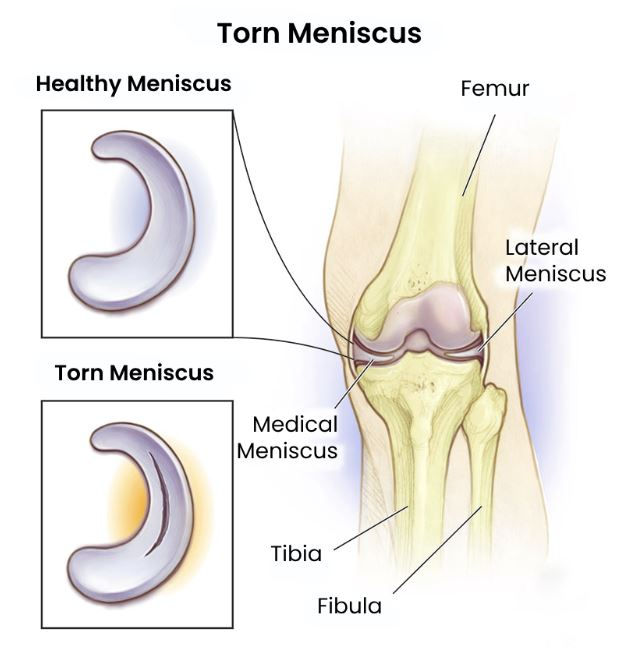Meniscus Repair Surgery in Bangalore with Dr. Ponnanna KM
- Pooja Vishwakarma
- Oct 1
- 4 min read
Knee pain and meniscus injuries are common among active individuals, athletes, and even those engaged in simple daily motions like squatting or twisting. The meniscus, a C-shaped cartilage structure in the knee joint, helps absorb shock, distribute load, and stabilize the knee. When a meniscal tear occurs, it can lead to pain, swelling, locking, or instability. In many cases, Meniscus Repair surgery in Bangalore (rather than removal) is now preferred to preserve joint health, reduce long-term degenerative changes, and maintain better knee function.
In Bangalore, one of the leading specialists in arthroscopic meniscus treatment is Dr. Ponnanna KM who performs cutting-edge meniscus repair surgery using minimally invasive techniques at Opera Bone & Joint Clinic and associated hospitals. His expertise, training, and patient-centered approach make him a sought-after choice for knee care.
Below is a detailed exploration of meniscus repair surgery in Bangalore, what you should expect, the advantages, and how to get in touch for care.
Understanding Meniscus Tears & Why Repair Matters
Anatomy & Function
Each knee has two menisci — the medial (inner) and lateral (outer) meniscus — acting as shock absorbers between the femur and tibia. These cartilaginous structures help:
Distribute weight and reduce stress on articular cartilage
Stabilize the knee during motion
Dampen forces during pivoting, twisting, and load transmission
When torn, the meniscus function is compromised.
Causes & Symptoms of Meniscus Tears
Meniscal tears can arise from:
Trauma / sports injuries — sudden pivoting, twisting motions, contact injuries
Degenerative changes — weakening of meniscal tissue over time, especially in older adults
Combined injuries — tears in conjunction with ACL or other ligament damage
Symptoms often include:
Pain along the joint line of the knee
Swelling and stiffness
Locking, catching, or a feeling of “giving way”
Difficulty fully straightening or bending the knee
Diagnosis
Dr. Ponnanna KM evaluates each patient thoroughly:
Clinical exam with specific knee tests
History of injury, duration, and symptoms
Imaging such as MRI to delineate the tear location, pattern, and associated injuries
In some cases, arthroscopic inspection to directly visualize the tear during surgery planning
Not all tears are repairable. Some patterns (such as complex, degenerative tears) may not be suitable for repair, and in those cases a partial meniscectomy may be considered. But whenever feasible, Meniscus Repair surgery in Bangalore offers superior long-term joint preservation.
Meniscus Repair Surgery: Technique, Benefits & Recovery
Surgical Technique
Dr. Ponnanna uses arthroscopic, minimally invasive techniques for meniscus repair:
Small incisions (portals) are made to introduce the arthroscope and microsurgical instruments.
The torn edges are assessed; repair is attempted when blood supply is adequate (typically the “red zone” outer region).
Sutures or anchors are placed to hold torn meniscal edges together, enabling healing.
The joint is inspected, cleaned of debris, and closure is done with small sutures.
Because it’s arthroscopic, the surgery causes less soft tissue damage, minimal scarring, and faster recovery.
Benefits of Meniscus Repair Over Removal
Preservation of meniscal tissue, maintaining its shock-absorbing and load-sharing roles
Lower risk of developing osteoarthritis, as more of the meniscus remains intact
Better long-term knee stability and function
Avoidance of further cartilage wear due to meniscus loss
Studies (such as on meniscal root repair) show that repairing the meniscus leads to improved functional and radiological outcomes when done under proper conditions.
Risks & Considerations
While the procedure is generally safe, potential complications include:
Infection
Persistent knee pain or stiffness
Failure of healing (re-tear)
Nerve or vessel injury (rare)
Delayed recovery
Success depends on factors like tear location, patient age, tissue quality, surgeon skill, and adherence to rehabilitation.
Recovery & Rehabilitation
Rehabilitation is critical after meniscus repair surgery. Typical recovery protocol includes:
Initial period of limited weight bearing (crutches) for several weeks
Controlled range of motion (ROM) exercises to prevent stiffness
Gradual strengthening of quadriceps, hamstrings, and hip muscles
Proprioception and balance training
Return to activities and sports gradually over months
Most patients achieve functional mobility within 2–3 months and may return to sports or high-impact activity by 4–6 months, depending on healing and the tear pattern.
Dr. Ponnanna customizes rehab protocols to each patient’s tear type and lifestyle demands.
Why Choose Dr. Ponnanna KM for Meniscus Repair in Bangalore
Several factors make Dr. Ponnanna KM a preferred choice for meniscus repair surgery in Bangalore
Highly Trained & Globally Exposed
Dr. Ponnanna completed his MS Orthopaedics and DNB, followed by fellowships in adult joint reconstruction, arthroscopy, and sports medicine. He also trained in Australia under top surgeons.
His focus is on arthroscopic meniscus surgeries, preserving natural tissue and reducing recovery time.
Integrated Joint & Sports Care
He handles associated knee issues — ACL, cartilage injuries, PCL — offering comprehensive knee care.
Clinic Infrastructure & Location
His base, Opera Bone & Joint Clinic in Malleswaram, Bangalore, is well known for orthopedic and arthroscopy services.
Patient Trust & Reputation
With over 15 years in practice, patient testimonials and referrals affirm his reliability and surgical outcomes
Contact Dr. Ponnanna KM – Scheduling & Locations
Opera Bone and Joint Clinic
Tel: 89515 45276
When you call or visit for a first consultation, expect to discuss your knee pain history, previous treatments, imaging scans, and whether you are a candidate for robotic total knee replacement surgery.






Comments